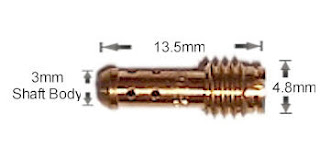The worst part so far has been getting all the old dried-up two-stroke oil cleaned off the bike. It took a couple of cans of brake cleaner (containing trichloroethelyne) to get down to metal in some places. The exhaust chambers are three-piece items and tend to leak half-burnt oil out the joints. The oil then goes everywhere. Even after I took the photo below, there was quite a bit more gunk to clean off the engine and lower parts of the bike.
I'm figuring it will take about $1000 in new parts, of which $200-$300 will be due to installing modern tires. With much of the bike disassembled, and parts on the bench, it's easier to tell what will need to be fixed, replaced, or rebuilt.
The first thing I did was to build a stand to hold it upright, because it's difficult to work on the down-sloping side of a bike on a kickstand. When I installed the expansion chambers, the center-stand had to go. No loss. It weighed 10 lbs and I rarely used it.
This rig is better than a centerstand, because I don't have to remove the chambers to use it, and it's more stable than a kickstand. When the time arrives to remove the wheels for tire replacement, I will pull the chambers, and put the bike up on a floor jack.
In the meantime, I've taken stock of issues with the fuel/air system.
The fuel tank was 1/4 full of foul, vinegar-smelling gasoline. I dumped that into an oil drain pan and burned it. It burned off with a nasty black smoke.
I still need to run acetone through the tank to dissolve the skunky gasoline deposits (aka "varnish").
The gasket on the fuel tank cap dried out and cracked. The replacement is a bargain at $10
Below is the fuel petcock. This mounts to the bottom of the fuel tank, with the long brass tube pointing up inside the tank. The long brass tube with the filter is the normal fuel supply, while the short filter is the reserve. This particular petcock design acts as a fuel shut-off valve when the engine is not running. When the engine is running, a vacuum fitting on one of the carburetors pulls on a diaphragm, which opens a fuel valve, allowing gasoline to flow down to the carburetors.
The gasket between the fuel tank and petcock is shot.
Both of the fuel filter socks are brittle and torn. There are some other rubber internals that have gotten hard and probably won't seal.
Below, the pentagon-shaped cover for the vacuum diaphragm.
Below, the four position fuel valve on the petcock. The "prime" position is for when the carburetors have no fuel in them to start the bike. "Prime" allows fuel to flow even when there is no vacuum on the diaphragm, so that the engine can be started initially. The petcock body needs a lot of clean-up and polishing.
Fortunately they make a nice soft-parts rebuild kit for this petcock. It's only $100. Ouch!
The rubber strap that holds the rear of the fuel tank down is cracked, and needs to be replaced.
They sell these too, for $13.
The fuel lines are hard and need to be replaced. You could play a drum with these, they are so stiff. However they are just clear (hahaha) 1/4" tubing, nothing exotic or expensive.
The Mikuni VM28SC carbs:
The carburetors need to be soaked in GUNK overnight ($19 at Wal-Mart) and then completely rebuilt.
Rebuild kits are $30 each (x 3 carbs)
I also need to re-jet the carbs. When I installed the expansion chambers and the ported cylinders that came from a drag-bike, I increased the main jet size two steps, from #80 to #85. I am pretty sure this is still way too little fuel, because the bike still bogged down when it got onto the pipe. I will try #100-110 on the main jets. (Main jets can be ordered in #2.5 increments)
Below: Main Jet. Set of four for $13 (many bikes have four cylinders, so I get an extra jet per set).
I will also increase the pilot jet size from #25 to #30, Below. Set of four, $40
Semi-clean carbs... Notice the right carburetor has an additional tubing fitting on the right side? That's for the vacuum line for the petcock to open the fuel valve.
I need to replace the rubber boots that fit over the top of the carbs to keep rain water out. Mine are cracked. $35 for a set of three.
The inlet manifold (below) is made of thick rubber, and is badly cracked.
Fortunately there is enough demand that the aftermarket has begun manufacturing these. $95 for the aftermarket, $225 for the original Kawasaki part. I am less concerned about originality than functionality :)
The air filter is a typical K&H that just needs to be cleaned and have the oil refreshed.
From what I can tell, this pretty much sums up what will need to be done on the fuel/air system. Now I just need time...






















No comments:
Post a Comment